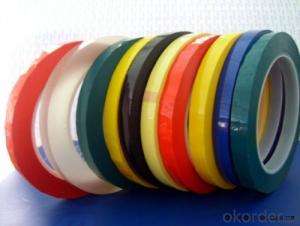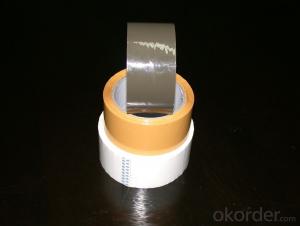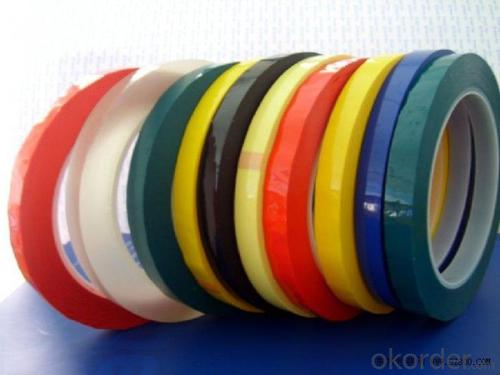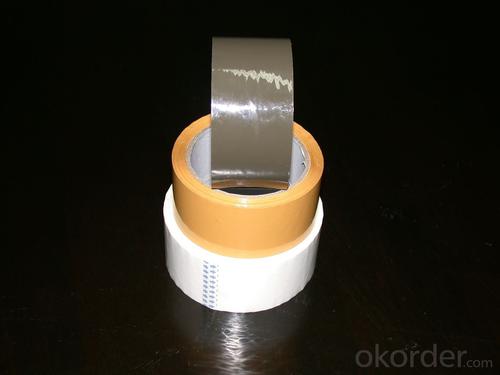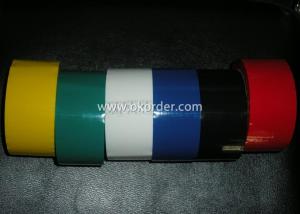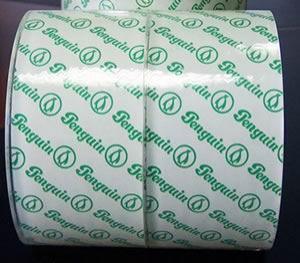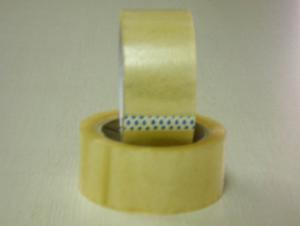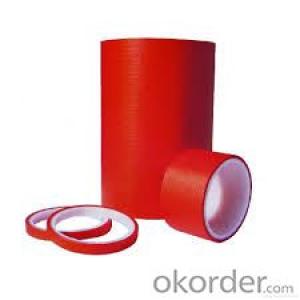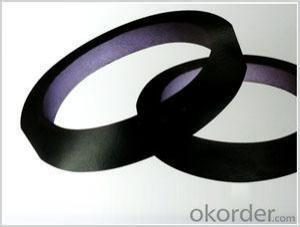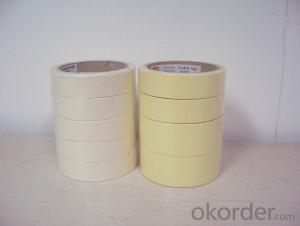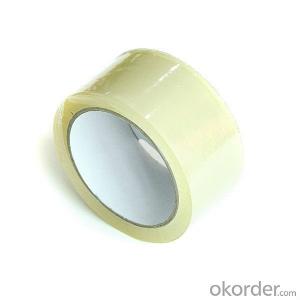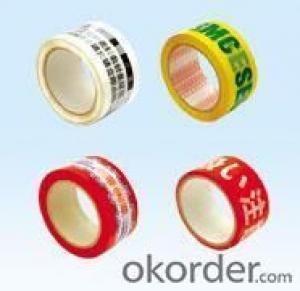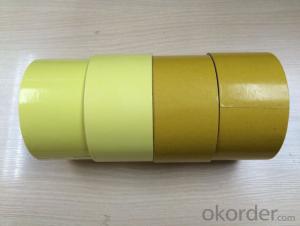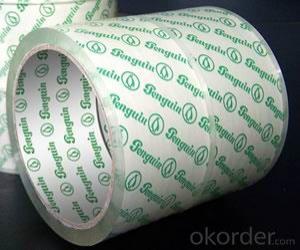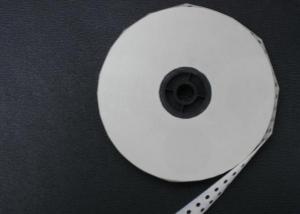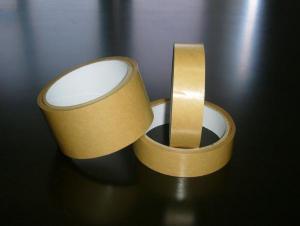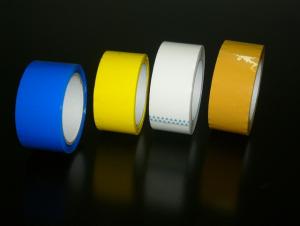Custom Packaging Tape Designs for Office and Industrial OPP Packing Tapes
- Loading Port:
- Fuzhou
- Payment Terms:
- TT OR LC
- Min Order Qty:
- 500 m²
- Supply Capability:
- 50000 m²/month
OKorder Service Pledge
OKorder Financial Service
You Might Also Like
Introduction of OPP Packing Tape
OPP packing tape are made of BOPP films coated with acrylic adhesive.
Application of OPP Packing Tape
1. Industrial box parking
2. outside electronics product packing with safety material
3. gift wrapping &decoration
4. general purpose repair
5. bundling &strapping
6. stationery purpose
Advantage of OPP Packing Tape
1.Packing tape, superb tack and adhesion to surface, Strong grip that is ensured because of an excellent adhesive backing.
2. Peak performance even under extreme conditions of pressure and temperature, which can stick to all types of surfaces.
3. Consistent quality
4. on time delivery
5. Effective and timely communication
6. Competitive price
Packing of OPP Packing Tape
individually wrapped, shrink, carton.
6rolls/shrink, about 36~100rolls/carton(according to different specifications)
carton size : any carton size as your request
Pictures of OPP Packing Tape

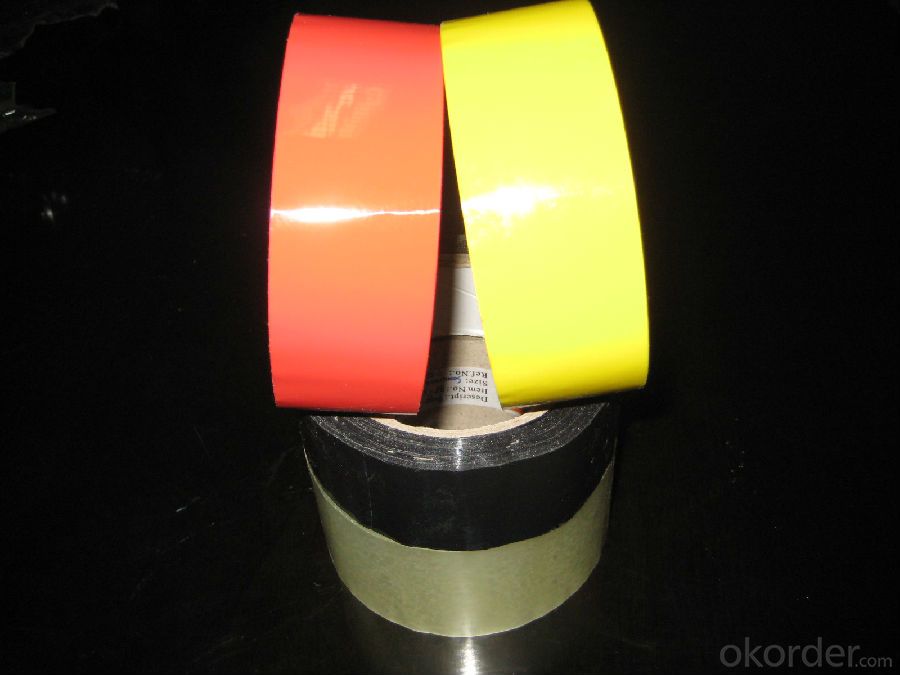
Specification of OPP Packing Tape
| Material | OPP |
| Adhesive Side | Single Sided. |
| Adhesive | Acrylic, Water based acrylic adhesive |
| Acrylic | Water based acrylic adhesive |
| Color | Transparent clear/yellowish /tan brown/blue/red/ green |
| Normal thickness | 36mic, 38mic, 40mic, 43mic, 45mic, 46mic, 48mic,50mic, 52mic |
| Packaging | Single packed, shrink film packed, depend on customer’s request |
Remarks:
1. The data above are typical results and subject to change without notice.
2. Tolerance: Weight and Thickness: ±10%; Width: ±3mm;
Length: Cut Roll & Log Roll ±0.3m, Jumbo Roll ±0.5%.
3. The products should be stored at room temperature and kept from wet and heat source.
4. It is essential, as with all pressure-sensitive tapes, that the surface to which the tape is applied must be clean, dry, and free of grease and oil.
5. The user should take test and do trial-application on the above products before coming into application so as to witness and ensure suitability for user’s special purpose and technique.
FAQ
1. What is the range of your products?
So far, we manufacture various kinds of double sided adhesive tape, masking tape, kraft tape and BOPP packing tape. To better meet your needs, we can also source other adhesive tapes for you if it is appropriate to do so.
2. What's the lead time for delivery?
We ensure you a prompt delivery of the goods. We do not stock any of the goods. The production cycle time of 1*20FCL is 2-3 weeks.
3. How many carriers does your double sided adhesive tapes have?
There are many carriers that our double sided adhesive tapes based on, which are tissue, PET, BOPP, PE foam, EVA foam.
4.Can you accept the cooperation way of OEM?
Upon receipt of formal authorization, we can accept OEM processing.
5.What are the international commodity codes for these products?
HS Code: 48231900.
6.Are you offering only jumbos rolls or slit rolls as well?
We offer Jumbos, logs, and slit rolls. All different sizes are available.
- Q: Can packaging tape be used for outdoor applications?
- Yes, packaging tape can be used for outdoor applications. However, it is important to choose a tape specifically designed for outdoor use, as it needs to be weather-resistant and durable to withstand various environmental conditions such as rain, sunlight, and temperature fluctuations.
- Q: How do I remove packaging tape without damaging the surface?
- To remove packaging tape without damaging the surface, you can follow these steps: 1. Start by lightly heating the tape using a hairdryer on a low setting. The heat will soften the adhesive, making it easier to remove. 2. Gently lift one corner of the tape using your fingernail or a plastic scraper. Be careful not to use sharp objects that could scratch the surface. 3. Slowly peel the tape back at a 180-degree angle, applying steady and even pressure. If the tape resists, stop and apply more heat to soften the adhesive further. 4. If there is any residue left behind, you can use rubbing alcohol or a mild adhesive remover. Apply a small amount to a soft cloth and gently rub the residue until it lifts off. 5. Once the tape and residue are removed, clean the surface with a mild soap and water solution to remove any remaining adhesive or residue. Remember to always test any cleaning solution on a small, inconspicuous area first to ensure it doesn't damage the surface.
- Q: What kind of material is used in this kind of tape? What are its features? How are they made? And so on!The more detailed you write, the better!
- The thermal decomposition temperature of polypropylene is 350~380 C. The flame is blue with yellow and no smoke
- Q: How many tapes do you need to make a tape? How do you calculate a mother roll and how many tapes do you make?To make a tape, you need a roll,1, how to calculate a mother roll, how many tapes do?2, now the mother rolls have what specifications?3. How much is the mother volume now?4, how do you calculate the profit of a roll of tape?
- 1 how much roll tape does a square of a mother roll divide by the square of a single adhesive tape. Of course, this includes lossExample: the square of a volume is 4800, and the square of a tape of a specification of 60*45.7 is about 2.74, then the volume of the tape isEqual to 1751 rolls, because there is a loss of about 1700
- Q: Is it possible to change the word "one" to "seal"?The origin of "sealing up" and "working"?Is it the result of solving some problems?1., "carton will open the experiment" experimental method. How to verify it?
- Package carton tape is not strictly required, according to the product or customer requirements, but "work work" would be typical package, not what is the origin of his allusions, summed up by the long-term production practice. That is to say, the typical package is the safest and most practical, and it can also play the supporting role of the outer box, so as not to expose the inner objects to the maximum extent. If the "top up" is used, the full or full cases will be deformed and exposed, so that there is danger of being damaged or soiled by foreign objects. If the customer does not have special requirements, products and permits the use of "a" can of course, or the direct use of "a", because you are "on the package", but in the process of transport is likely to become the next. ".
- Q: Can packaging tape be used for sealing cosmetic or beauty products?
- Yes, packaging tape can be used for sealing cosmetic or beauty products. However, it is important to note that the type of packaging tape used should be suitable for the specific requirements of the product. For example, if the cosmetic or beauty product is sensitive to heat or moisture, it may be advisable to use a specialized tape that offers greater protection against these factors. Additionally, it is crucial to ensure that the packaging tape used is safe for use on the skin or any other part of the body, as some tapes may contain adhesives or materials that could cause irritation or allergic reactions. Therefore, it is recommended to carefully consider the specific needs of the cosmetic or beauty product and choose a packaging tape that meets those requirements effectively and safely.
- Q: Can packaging tape be used for sealing packages with heavy items?
- Yes, packaging tape can be used for sealing packages with heavy items. Packaging tape is specifically designed to provide strong adhesion and durability, making it suitable for securing packages containing heavy items. It is made from a strong material like polypropylene or acrylic, which ensures that it can withstand the weight and pressure of heavy items without easily tearing or coming loose. Additionally, packaging tape often has a strong adhesive backing that bonds well with various surfaces, ensuring a secure seal. However, it is important to choose the appropriate width and thickness of packaging tape to ensure proper sealing for heavy packages.
- Q: Can packaging tape be used for sealing electrical or wiring components?
- No, packaging tape should not be used for sealing electrical or wiring components. Packaging tape is not designed to provide insulation or protection against electrical currents. It lacks the necessary properties to ensure the safety and reliability of electrical connections. It is important to use appropriate electrical tape or other specialized materials that are specifically designed for sealing and insulating electrical components.
- Q: Can packaging tape be used for securing pallet loads?
- Yes, packaging tape can be used for securing pallet loads. Packaging tape is commonly used to secure boxes and packages, but it can also be used to reinforce and secure pallet loads. It helps to hold the items on the pallet together, preventing them from shifting or falling off during transportation or storage. However, it's important to note that the effectiveness of packaging tape for securing pallet loads may depend on the weight and stability of the items being transported. In some cases, additional strapping or banding may be needed for extra security.
- Q: Can packaging tape be used on different surfaces, such as cardboard, plastic, or metal?
- Yes, packaging tape can be used on different surfaces such as cardboard, plastic, or metal. Packaging tape is designed to provide a strong and secure seal, making it suitable for various materials. It adheres well to the rough surface of cardboard, ensuring that boxes and packages remain securely sealed during transit. Additionally, packaging tape can adhere to smooth surfaces like plastic, ensuring that items are securely packaged and protected. It can also be used on metal surfaces, providing a reliable seal for packages and boxes made of metal. Overall, packaging tape is versatile and can be used on different surfaces, making it an essential tool for packaging and shipping needs.
Send your message to us
Custom Packaging Tape Designs for Office and Industrial OPP Packing Tapes
- Loading Port:
- Fuzhou
- Payment Terms:
- TT OR LC
- Min Order Qty:
- 500 m²
- Supply Capability:
- 50000 m²/month
OKorder Service Pledge
OKorder Financial Service
Similar products
Hot products
Hot Searches
